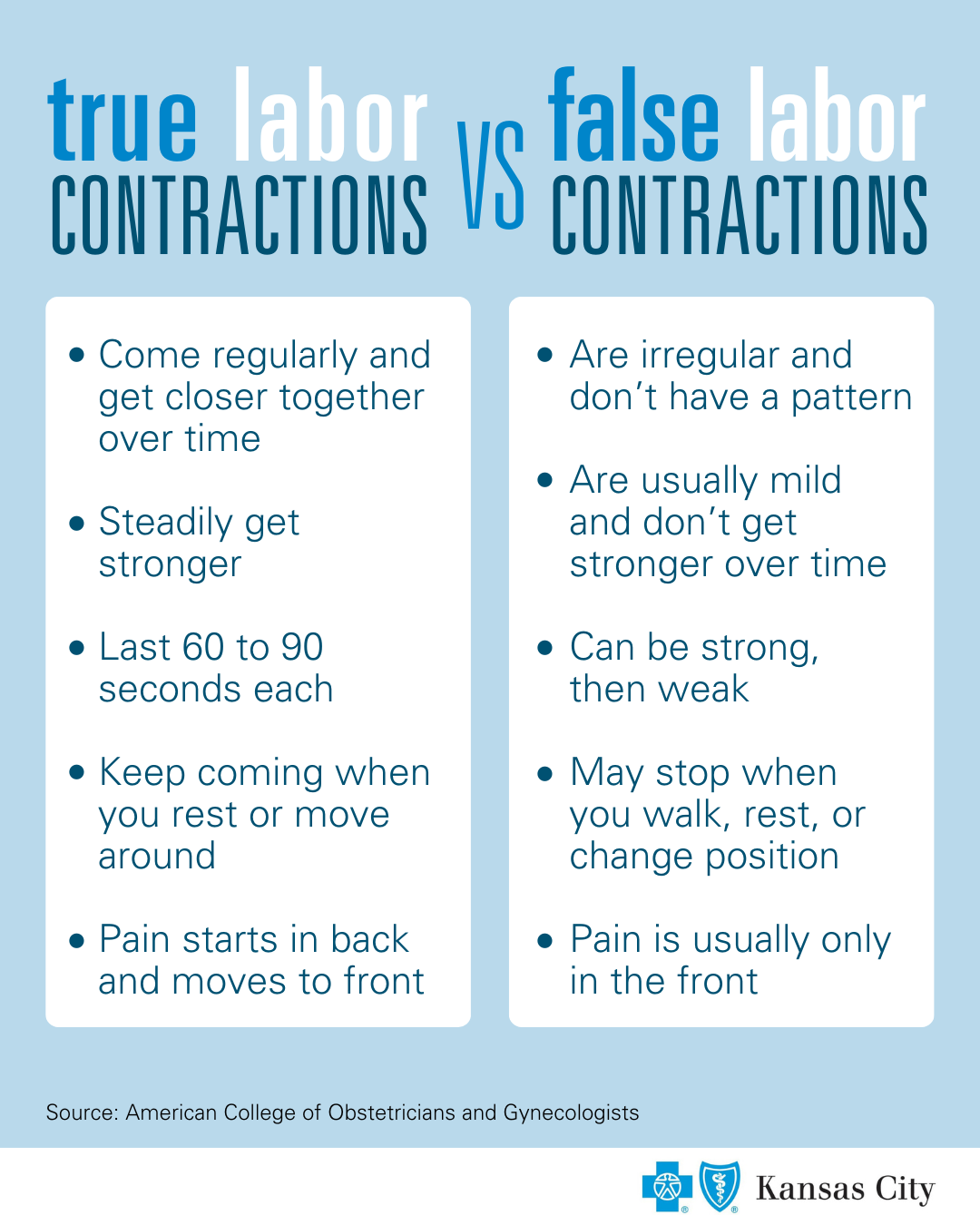
The Blue KC Care Management app makes it easy to get your pregnancy questions answered. Download it now and use access code kclinkbegin to connect.
You’ve been pregnant for nearly 40 weeks. Here are some signals that you’re about to give birth soon.

As your due date gets close, it’s natural to think about when exactly you will go into labor.
And while it’s true that pregnancy lasts roughly 40 weeks, your due date is not an exact science. In fact, most women give birth sometime between 38 and 41 weeks, according to the American College of Obstetricians and Gynecologists (ACOG).
That can make it tricky to know when your baby is actually on the way — especially if you’re a first-time mom.
“Nobody really knows what sends your body into labor. We assume it’s a large hormonal shift, because that’s what’s happening at the end of pregnancy,” explains D’Lita M. Parker, R.N. She’s a nurse practitioner specializing in ob-gyn at University Health’s Truman Medical Center in Kansas City, Missouri.
There are signs that your body is getting ready for labor though. Some your provider will spot during an exam and tell you about. Others you’ll notice. And some are so subtle you may even miss them.
Here is what to watch for as your due date approaches.
The official term is lightening. “That’s when your baby drops down into the pelvis,” says Parker. That’s the part of your body between the two hip bones.
What it feels like: You’ll feel pressure from the baby’s head on your rectum and vagina, says Parker. But while you’ll get that low feeling in your pelvis, you may feel lighter overall. That’s because your baby isn’t pressing up against your diaphragm, the muscle right below your lungs.
When it happens: Lightening can happen days or weeks before labor does, according to ACOG.
The technical term is effacement. A thinner cervix can open more easily. That’s called dilation. Your cervix has to be dilated to 10 centimeters before the baby can pass through it.
What it looks like: You won’t know it has happened, but your provider will check for both signs during a pelvic exam in the third trimester. Your cervix will be “extremely soft, like butter,” says Parker. And you may already be 1 or 2 centimeters dilated.
When it happens: Both can happen weeks before actual labor.

The Blue KC Care Management app makes it easy to get your pregnancy questions answered. Download it now and use access code kclinkbegin to connect.
“The mucus plug is just what it sounds like,” says Parker. “It’s a plug of mucus that’s just sitting at the opening of the cervix.” It forms during pregnancy. As your cervix begins to open wider (dilate), the plug gets pushed into the vagina.
What it looks like: You might notice more vaginal discharge. It could be clear, pink, or even a little bloody.
When it happens: It could happen days before labor — or minutes before. Or at any time during your pregnancy, says Parker. “The mucus plug can be dislodged during a pelvic exam, from intercourse, or from contractions.” And you may not even notice the slightly bloody discharge at all.
It’s called the nesting instinct. It’s a sudden urge to organize your home before you bring your baby home. Nesting can happen any time during pregnancy, but for some women it’s a sign that the baby is coming, according to the Mayo Clinic.
What it looks like: You might cook and freeze meals. Or organize your baby’s room. Or wash and fold those newborn outfits.
When it happens: “Some women get that big burst of energy and start nesting right before they deliver,” says Parker. It can happen right before labor starts — or days before.
Your baby has been floating in amniotic fluid. It’s called the amniotic sac. “That is your baby’s sterile place,” explains Parker. This sac may break right before labor starts or during labor.
What it feels like: It can feel like a gush of water (or urine), or a trickle.
When it happens: It can happen at any time but call your provider right away when it does. Your baby is no longer protected from bacteria after the amniotic sac breaks.
As your body gets ready to give birth, your uterus begins to contract. Contractions are when the muscles in your uterus get tight and then relax.
Sometimes this is false labor, known as Braxton-Hicks contractions. You may feel Braxton-Hicks in the weeks before your due date, according to the March of Dimes. But you’ll know you’re in labor when you begin to have the real ones.

What they feel like: Real contractions feel like bad period cramps. “Expectant women tend to have back pain that is radiating around to the front of their abdomen when that uterus gets really tight,” says Parker. True labor contractions also come in regular intervals.
As labor progresses, the time between contractions gets shorter. The contractions also get more intense and last for 60 to 90 seconds. “Women are generally having to stop and huff and puff and breathe when they’re coming,” says Parker.
When it happens: When contractions are regular and intense, you’re in active labor. But this phase can last anywhere from four to eight hours. Your provider will tell you when it’s time to head to the hospital.
Just remember, not all women will have all these signs, says Parker. If you start to feel different, or if something is happening that you have never experienced before, call your provider.
Additional sources:
Childbirth statistic, lightening: American College of Obstetricians and Gynecologists
Nesting: The Mayo Clinic
Braxton-Hicks contractions: March of Dimes
Blue Cross and Blue Shield of Kansas City is an independent licensee of the Blue Cross and Blue Shield Association.